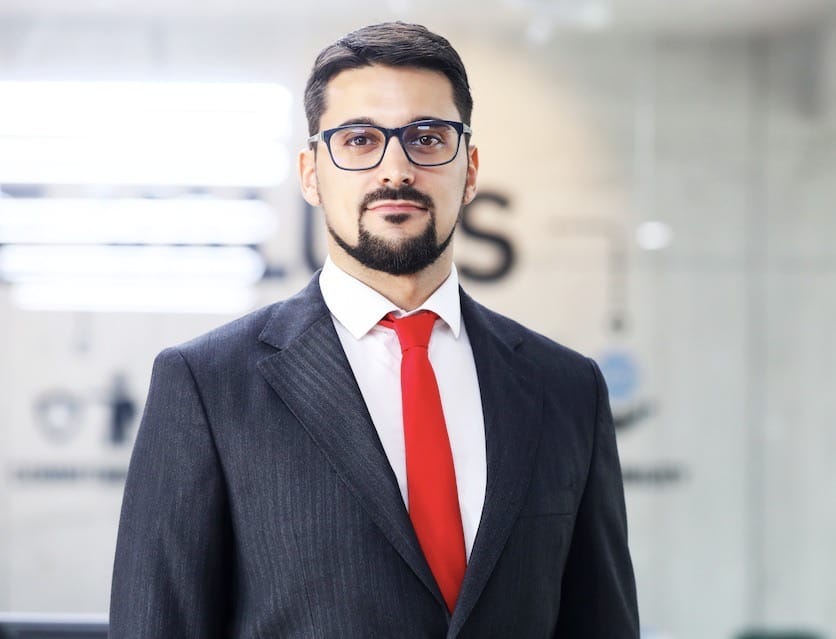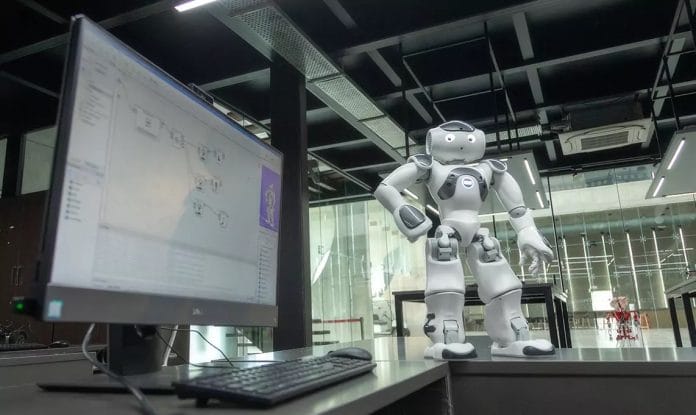In an exclusive interview with NE Global at India’s Woxsen University in Hyderabad, Raul V. Rodriguez, Vice President and Steven Pinker Professor of Cognitive Psychology, presented his approach on the globally important topic of Artificial Intelligence (AI) and energy, proposing some interesting solutions from oil and gas to environmental sustainability and tackling climate change.
NE Global (NEG): How can we develop AI systems that make complex energy technologies accessible to diverse stakeholders while incorporating community knowledge and participation throughout the development lifecycle?
Raul V. Rodriguez (RR): The fundamental challenge isn’t a technological one; it’s a cognitive and social one. My work is predicated on the idea that we must augment human intelligence, not replace it. In the context of energy, this means we shouldn’t build an AI “black box” that dictates solutions. Instead, we must create cognitive tools that augment a community’s collective intelligence, allowing them to navigate complex energy trade-offs themselves.
Here’s my framework, which combines social systems, cognitive modeling, and automation:
Translate Complexity into Cognitive Clarity: Non-experts can’t engage with raw engineering data. The first step is to build an AI interface grounded in the principles of perceptual psychology. The system must translate petabytes of grid data, cost analyses, and environmental reports into intuitive, interactive visualizations. This isn’t just about good UI; it’s about designing a system that lowers the cognitive load required to understand the consequences of, for example, building a solar farm versus a natural gas plant. This mirrors the work I did with the Intelligent Air Traffic Management System (IAMS), where we reduced controller cognitive load while increasing system capacity.
Integrate Social Dynamics as a Core Variable: Community knowledge — local values, historical context, social priorities — isn’t just “qualitative data” to be added later. It must be a core input to the model’s logic. Using principles from my work on Behavioral GPS™, we can model community preferences and potential social friction points as key variables in the system. The AI doesn’t just optimize for cost or efficiency; it co-optimizes for social acceptance and equity.
Model for Systemic Failure, Not Just Success: True participation means giving stakeholders the ability to see how things can go wrong. I would apply my Universal Failure Theory (UFT) here. The AI system would be designed to model potential failure points in an energy project, including social ones like loss of public trust or community opposition. By allowing stakeholders to “stress-test” different scenarios, we empower them to build more resilient and antifragile energy strategies from the ground up.

Ultimately, the goal is to prevent the cognitive atrophy that occurs when communities become dependent on opaque algorithms. A successful AI in this domain is one that makes itself progressively less necessary by teaching the community how to think systemically about their own energy future.
NEG: How can AI positively impact the energy market?
RR: AI’s most profound impact on the energy market will come from shifting its fundamental operating model — from one based on siloed, reactive decisions to a holistic system of predictive, augmented intelligence. This isn’t just automation; it’s about elevating the cognitive capabilities of every human operator and market participant within a complex network. My perspective, grounded in cognitive modeling and complex system optimization, points to three areas of transformation:
The Cognitive Co-Pilot for Grid Operations: The modern grid is too complex and dynamic for unassisted human management. Drawing from the principles I developed for the IAMS in aviation, we can create AI-powered “cognitive co-pilots” for grid operators. These systems don’t just display data; they synthesize vast, multi-source information — from weather patterns to network stress points — and present prioritized, actionable insights. This augments the operator’s ability to make high-stakes decisions under pressure, preventing blackouts and ensuring stability.
Systemic Risk Modeling with Universal Failure Theory (UFT): The energy market is vulnerable to systemic failure, from geopolitical shocks to climate events. Instead of merely forecasting prices, a more advanced AI would apply a framework like my UFT to model the mathematics of breakdown. It would identify hidden interdependencies and cascading failure risks across the entire value chain, allowing regulators and companies to build a more resilient market architecture.
Behavioral Forecasting for a Decentralized Grid: The future grid is decentralized, with millions of prosumers (producers/consumers) making decisions about solar panels, electric vehicles, and battery storage. To manage this, we need to understand and predict human behavior at scale. My work with Behavioral GPS™, which achieves over 85 percent accuracy in predictive cognitive modeling, can be directly applied here. By modeling the neuropsychology of consumer decision-making, AI can help utilities design more effective demand-response programs and ensure the grid remains balanced in a highly dynamic, human-driven environment. In essence, AI’s positive impact won’t just be in optimizing megawatts; it will be in enhancing the collective intelligence and foresight of the entire energy ecosystem.
NEG: Can you talk about your revolutionary platform designed to enhance passenger experiences and operational efficiency across airports in the Middle East?
RR: Certainly. The platform is a direct commercial application of my foundational research in cognitive modeling and complex system optimization, specifically extending the principles from my patented Intelligent Air Traffic Management System (IAMS). The core problem in any major airport isn’t just logistics; it’s the management of massive, distributed cognitive load—on passengers, ground crews, air traffic controllers, and operations managers. Our platform is designed not merely to automate processes but to augment the intelligence of the entire airport ecosystem. We call it a Cognitive Architecture for Aviation Hubs. Here’s how it works:
For the Operator: From a Control Tower to a Cognitive Cockpit: The platform creates a “digital twin” of the airport, but it’s more than a simulation. It’s a real-time cognitive model of the entire operation. Drawing on my work in the neuropsychology of decision-making, the system doesn’t just show operators that a gate is delayed. It predicts the cascading cognitive impacts: the increased stress on the ground crew, the ripple effect on subsequent flights, and the potential for human error. It then recommends interventions that optimize not just for time, but for reducing systemic cognitive load. This is the IAMS principle in action: we increased airspace capacity by 31 percent primarily by lowering controller cognitive burden.
For the Passenger: Eliminating Cognitive Overhead: The passenger journey is filled with decision points that create anxiety and friction. Our passenger-facing application uses predictive cognitive modeling, similar to my Behavioral GPS™, to understand a passenger’s likely state and needs. It provides hyper-personalized, just-in-time information that eliminates the mental work of travel. The goal is a state of “flow,” where the passenger is guided seamlessly from curb to gate without having to actively problem-solve. We’re moving beyond convenience to engineer a psychologically positive experience.
Systemic Resilience through Universal Failure Theory (UFT): Airports are brittle systems where one small failure can cause a complete breakdown. Our platform integrates my UFT to constantly model potential points of systemic failure. It can predict how a baggage system failure combined with a delayed inbound flight and a security staff shortage could cascade into a terminal-wide shut down, allowing management to take preventative action.

This is revolutionary for the Middle East because their hubs are global leaders in scale and ambition. They don’t need incremental improvements; they need a new operational paradigm. My work with the Government of Dubai and major airline operators has validated that this focus on augmenting human intelligence is the key to unlocking the next level of efficiency and passenger experience.
NEG: What is the Future of AI and Environmental sustainability?
RR: The future of AI and environmental sustainability presents a stark choice. It will either become our most powerful tool for augmenting human ecological intelligence, or it will become the ultimate accelerant of our cognitive atrophy, deepening our dependence on unsustainable systems. The outcome depends entirely on our design philosophy. From my perspective, which integrates cognitive science and complex systems, the future must focus on three key areas:
AI as a “Planetary Nervous System”: The future isn’t just about using AI to monitor deforestation or ocean acidity. It’s about creating a global cognitive architecture — a planetary nervous system — that allows us to understand the Earth as a single, complex, interconnected system. This system would not only sense environmental changes in real-time but also model the complex, non-linear dynamics of our ecosystems. This is where my work on necrobotics and biomaterial intelligence becomes relevant; we are learning to interface directly with biological systems, which is a precursor to truly understanding them.
Applying Universal Failure Theory (UFT) to Ecosystem Collapse: Our greatest environmental threats, like climate change and biodiversity loss, are problems of systemic failure. The future of AI in sustainability lies in applying frameworks like my UFT to model the mathematics of ecological breakdown. An AI armed with this theory could identify the critical tipping points and cascading failure pathways in our global systems, giving us a fighting chance to intervene before collapse becomes inevitable. It moves us from reactive conservation to predictive planetary stewardship.
Bridging the Cognitive Gap between Data and Action: We have more data on climate change than ever before, yet meaningful action lags. This is a problem of human psychology and decision-making. The future of AI is not to generate more charts, but to bridge this cognitive gap. It must be used to create personalized, tangible simulations that translate abstract threats like “a 2-degree temperature rise” into concrete, localized impacts. It must augment the decision-making of policymakers and citizens, making the consequences of inaction feel immediate and real, thereby overcoming the natural human bias to discount future risks. The critical danger is creating AI that simply optimizes our current, unsustainable economic models more efficiently. That path only leads to us driving off the cliff faster. The true future lies in building AI that forces us to confront complexity and augments our intelligence to navigate it wisely.
NEG: Which solutions can redefine the future of oil and gas industries through AI?
RR: The oil and gas industry is a high-stakes, complex system defined by immense risk and inertia. AI’s role is not just to optimize existing processes but to fundamentally redefine the industry’s cognitive architecture — from one of reactive, brute-force engineering to one of predictive insight and systemic intelligence. Based on my work in complex system optimization and human-technology integration, the most transformative solutions are:
Systemic Risk Prevention with Universal Failure Theory (UFT): The industry is plagued by catastrophic failures — blowouts, spills, and explosions. These are almost always systemic failures, not isolated incidents. The most revolutionary AI solution would be a platform built on my UFT. Instead of just predicting when a single piece of equipment will fail, this system would model the entire operation — integrating mechanical data, human factors, and environmental conditions — to identify the pathways to systemic breakdown. It would be an early warning system for disasters, moving the industry from reactive safety checklists to proactive risk elimination.
Augmented Intelligence in the Subsurface: Finding and extracting resources is a cognitive challenge of interpreting vast, ambiguous geological data. AI will redefine this by creating “cognitive co-pilots” for geoscientists and reservoir engineers. These systems won’t replace human expertise; they will augment it. By processing seismic data at scales no human could, and identifying patterns invisible to our perception, AI will allow experts to make more accurate decisions, drastically reducing the cost and environmental impact of exploration. This mirrors my work in other domains where AI serves to amplify, not automate, high-level cognition.
Cognitively Aware Autonomous Operations: The future is autonomous, but true autonomy requires an understanding of human factors. Control room operators are subject to cognitive load and biases, which can lead to error. Drawing from my expertise in the neuropsychology of decision-making and aviation human factors, the next generation of AI for plant and pipeline operations will be “cognitively aware.” It will monitor operator attention and stress levels, adapt its interface to reduce cognitive load during emergencies, and ensure the human-in-the-loop is always in a state of optimal decision-making capacity. This is a far more sophisticated and safer approach than simple automation. Ultimately, these solutions redefine the industry by shifting its focus. Instead of using AI to do the same things slightly cheaper, it uses AI to build a deeper, systemic understanding of its operations, augmenting the intelligence of its people to make safer, more efficient, and more responsible decisions.








